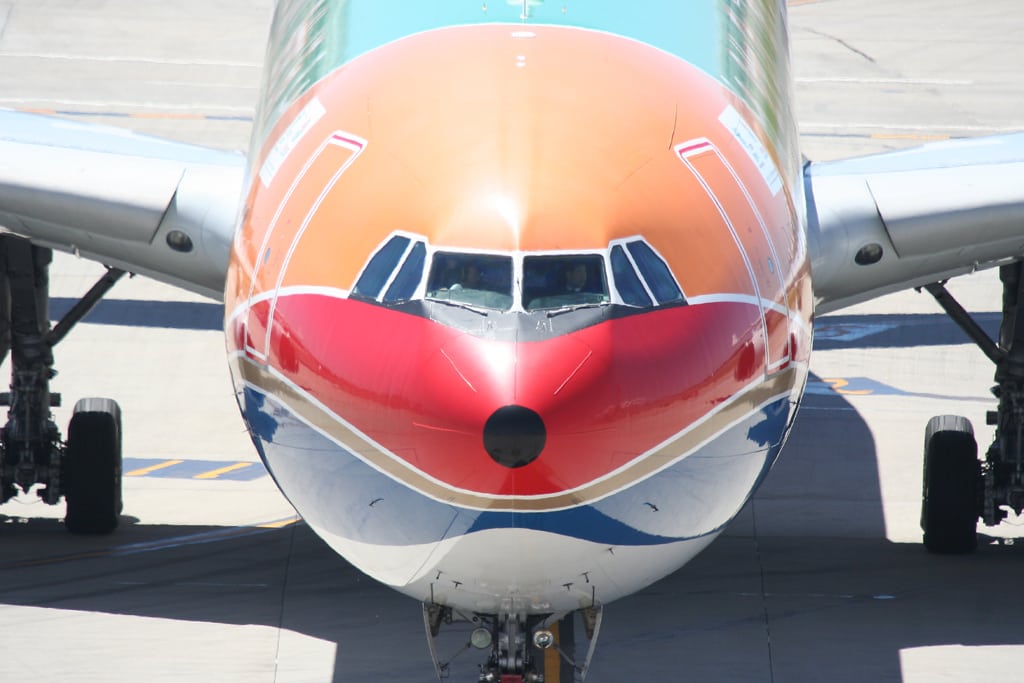Skift Take
There's a bit of Cold War in China's behavior right now. Whether or not the free market will break through the bureaucracy will be fascinating for spectators to watch.
China’s skies don’t have enough space.
The country’s air force controls airspace and allots only 20 percent to civil aviation. With China’s three biggest airlines planning to add at least 273 planes in the next three years, traffic congestion that already delays 25 percent of flights is set to worsen.
“At present, the limited airspace resource has restricted the development of civil aviation,” said Li Jiaxiang, the head of Civil Aviation Administration of China. “We will strive to further open up the airspace,” he said in Beijing yesterday.
Air China Ltd., China Eastern Airlines Corp. and China Southern Airlines Co. have expanded their fleet as economic growth spurs air travel demand in the world’s most populous nation. The country is expected to have 4,200 commercial aircraft in 2020, compared with the current fleet size of 2,001 with 46 airlines, CAAC’s Li said.
China’s civil aviation uses about a fifth of available routes of the nation’s total airspace, Shi Boli, who heads the department of Air Transportation Regulation at CAAC, said in an interview. Military controls about 52 percent of airspace in eastern China, home to the country’s biggest cities of Beijing and Shanghai, according to a 2011 June report by the official China News Service.
“We are working hard and the military is also trying to improve the management of airspace,” Shi said. “But, it could take some time to achieve some improvement.”
U.S. airspace
In the U.S., military restrictions don’t have much impact on civilian aviation because its airways tend to be located in desert regions or over oceans, far away from the busy airport hubs in cities such as New York, said Kevin Hiatt, president of Alexandria, Virginia-based Flight Safety Foundation. The military has also allowed its airspace to be used by civilian flights on some occasions such as busy holiday periods, he said.
Airspace over Europe is managed as a single unit and segregated on a “dynamic basis according to the needs of users,” air traffic supervisory agency Eurocontrol said. In general, areas will only be reserved for military use at certain times and at certain altitudes, it said in an e-mail.
The on-time performance rate of China’s airlines was about 74.5 percent last year, CAAC’s Shi said. In the U.S., 82 percent of the flights arrived on time in 2012, according to Bureau of Transportation statistics.
‘New leadership’
“People are hoping that the country’s new leadership can have a breakthrough in getting more airspace released to accommodate the rapid growth,” said Kelvin Lau, a Hong Kong- based analyst at Daiwa Securities Group Inc. “Otherwise, delays will persist and hurt the airlines’ long term growth prospects.”
China’s air force, which has controlled the airspace since the People’s Republic was established in 1949, has started gradually relaxing some of the curbs. It has begun to open low- altitude airspace and released more information about the availability of temporary routes, the Official Xinhua News Agency reported in August.
Still, the pace isn’t quick enough to catch up with the airlines’ growth as the number of annual passengers has more than doubled in the past seven years, said David Wei, an aerospace analyst with Shanghai Securities Co.
“The military has a bigger say in China’s airspace usage for historical reasons,” Wei said. “It has no incentive to concede the right unless the government wants it to.”
Fly longer
Airspace restrictions also force airlines to fly longer distances on some routes, said Liu Jieyin, executive vice president at closely-held Okay Airways Co., which operates flights between cities including Tianjin, Hangzhou and Sanya.
“This is still better than before when we had to wait on ground for hours for the completion of military drills,” Liu said. “We couldn’t take proactive measures as we wouldn’t know drills until the last minute and couldn’t tell passengers the real reason either.”
Air China, Asia’s biggest carrier by market value, will receive 113 aircraft in the next three years, according to a company statement. China Eastern will add 93 planes in two years while China Southern will have 67 additions this year, the carriers have said.
‘Tomorrow’s growth will further pressure the system,’’ said Will Horton, a Hong Kong-based analyst at CAPA Centre for Aviation, which advises airlines. “While reforms are gradually being made, the military seems impervious to the government’s wish for more airspace.”
Airport infrastructure
While carriers await the easing of airspace rules, the nation is expanding its airport infrastructure. Beijing has won approval for its new facility with an investment of more than 70 billion yuan ($11 billion), Beijing News reported in January. The country targets to have 260 airports by 2020 from 183 at present.
“The emergence of a rapidly growing middle-class with aspirations to travel, along with record levels of urbanization and continued growth in business, has created a pressing need for better aviation infrastructure across China,” said Will Lau, an aviation consultant with EC Harris (Hong Kong) Ltd. Still, “the physical assets on the ground will not effectively respond to the passenger demand unless additional capacity is also made available in the skies above.”
With assistance from Alan Levin in Washington. Editors: Vipin V. Nair, Suresh Seshadri. To contact the reporter on this story: Jasmine Wang in Hong Kong at [email protected]. To contact the editor responsible for this story: Vipin V. Nair at [email protected]. ![]()
The Daily Newsletter
Our daily coverage of the global travel industry. Written by editors and analysts from across Skift’s brands.
Have a confidential tip for Skift? Get in touch
Tags: china
Photo credit: A China Eastern Airlines Airbus A340-642. Noel Jones / Flickr
